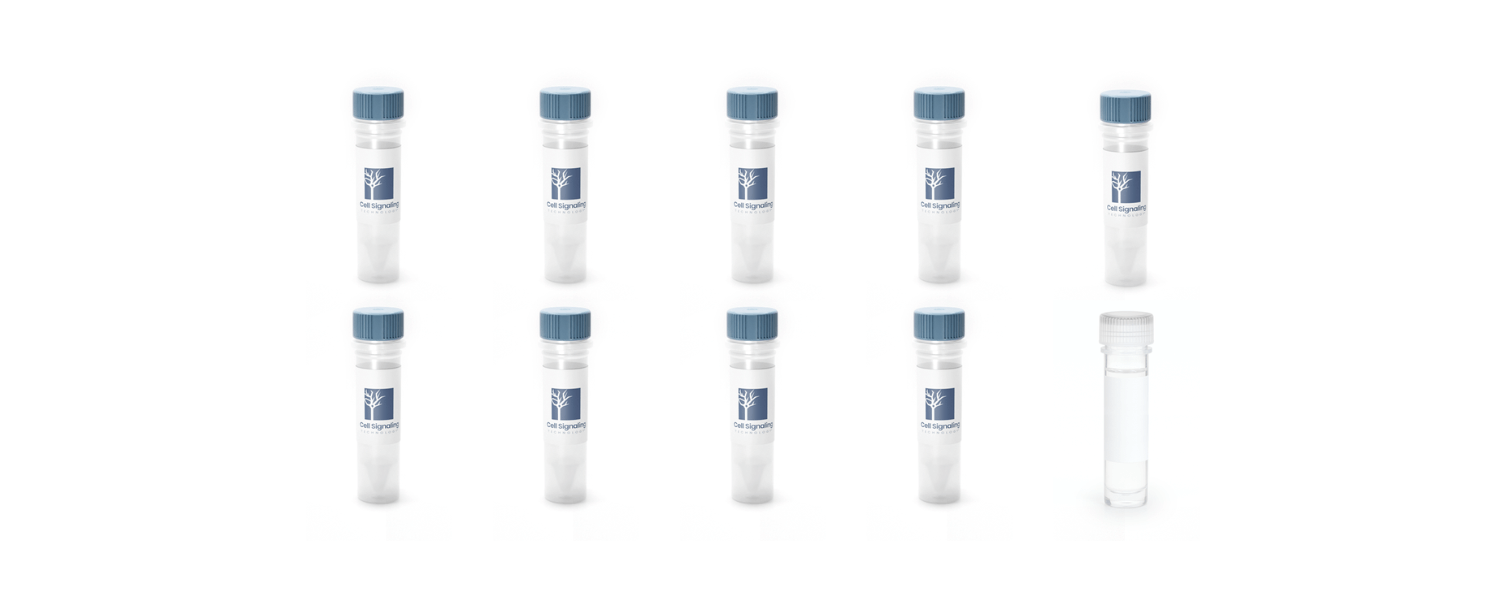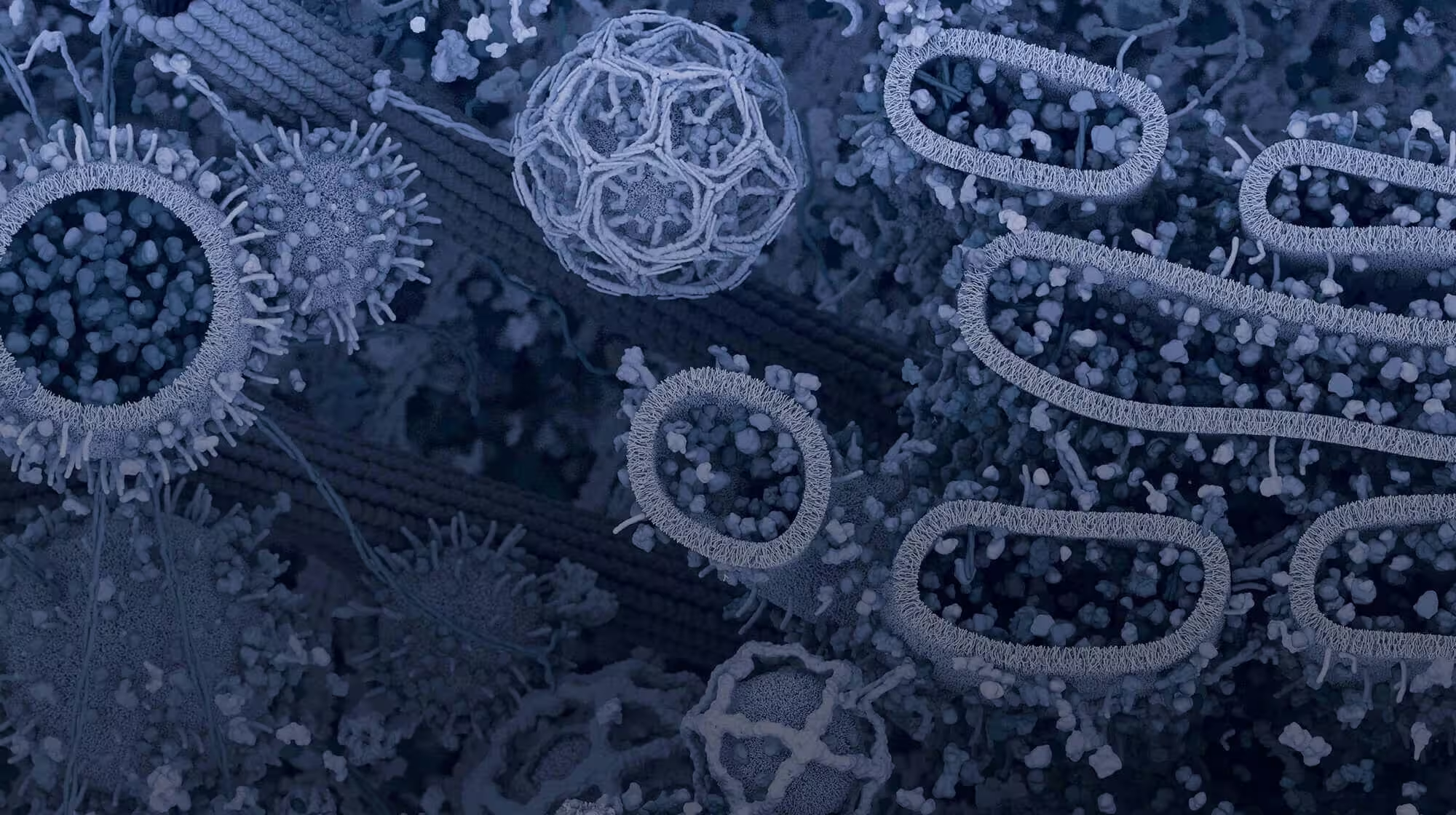In humans, hematopoietic stem cells (HSCs) continuously replenish all types of blood cells via a series of lineage restriction steps. This process begins with the production of common lymphoid progenitor (CLP) and common myeloid progenitor (CMP) cells, which subsequently differentiate further in response to various stimuli. CLPs further differentiate into specialized lymphoid cells that play critical roles in immunity.
Releated: Which cells have a myeloid lineage and how are they identified?
Types of Lymphoid Lineage Cells
Cells of the lymphoid lineage include T cells and B cells, which are involved in adaptive immunity, and natural killer (NK) cells, which are part of the innate immune system.

To study how different lymphoid lineage cells function in health and disease, immunology researchers must detect and quantify distinct cellular subtypes within a heterogeneous population. This can be achieved using antibodies for cell-type-specific markers, allowing cells of interest to be visualized using techniques such as flow cytometry or immunohistochemistry (IHC).
Common marker classes include cluster of differentiation (CD) molecules, transcription factors, and chemokine receptors.
Functional Overview of Lymphoid Lineage Cells
Terminally differentiated cells of the lymphoid lineage perform diverse roles in the immune response:
- Cytotoxic T cells (CD8+) kill infected or malignant cells through the release of lytic granules following the recognition of their specific antigen by the T cell receptor (TCR). These cells can form long-lived memory cells.
- Helper T (Th) cells (CD4⁺) are also activated by antigen recognition through the TCR. They coordinate immune responses by influencing the function of other cells through cytokine secretion and immunomodulatory receptors expressed on the cell surface. Like cytotoxic T cells, they can also develop long-lived memory cells.
- B cells are antibody-expressing cells that undergo rapid clonal expansion upon encountering their target antigen to form short-lived plasma cells and lasting memory B cells.
- NK cells kill infected and malignant cells; their cytotoxic activity is controlled by the balance of signals received from activating receptors that bind ligands expressed by infected or transformed cells and inhibitory receptors that bind MHC I molecules.
Lymphoid Lineage Cell Types & Markers
Although broad subsets of lymphoid lineage cells can be characterized using just one or two markers, identifying specific cell types within each subset often involves detecting defined marker groups.
T Cell Markers
All T cells express CD3, however, upon differentiation into cytotoxic T cells and helper T cells (Th), these cell subtypes express CD8 and CD4, respectively.
|
|
|
Helper T (Th) cells can be further sub-categorized based on the presence of additional markers. For example:
- Th1 cells can be identified by the expression of T-Bet and IFNγ.
- Th2 cells demonstrate positive staining for GATA-3 and IL-4.
- Th17 cells express both RORγt and IL-17.
- Regulatory T cells (Tregs) can be characterized by the expression of FoxP3 and CD25.

Tregs: IHC analysis of paraffin-embedded human tonsil using recombinant monoclonal antibody FoxP3 (D2W8E) Rabbit mAb #98377.
- T follicular helper cells (Tfhs) express Bcl-6, CXCR5, and IL-21.
- γδ T cells represent an unconventional subset of CD3-positive T cells that express a heterodimeric T cell receptor composed of gamma and delta chains. Unlike conventional T cells that express TCRs with αβ chains, γδ T cells do not express either CD4 or CD8 co-receptors and are far less abundant in the peripheral blood. They have a propensity to take up residence in mucosal and epithelial tissues, where they recognize antigens that are upregulated in response to cellular stress and transformation in a manner that is independent of classical MHC restriction.
 γδ T cells: IHC analysis of paraffin-embedded normal human thymus using recombinant monoclonal antibody TRDC/TCRδ (E2E9T) XP® Rabbit mAb #55750.
γδ T cells: IHC analysis of paraffin-embedded normal human thymus using recombinant monoclonal antibody TRDC/TCRδ (E2E9T) XP® Rabbit mAb #55750.
B Cell Markers
Like T cells, B cells can be identified using just a single marker—CD19. However, distinguishing between naïve B cells, plasma cells, and memory B cells involves detecting different marker combinations.
 B cells: IHC analysis of paraffin-embedded human tonsil using recombinant monoclonal antibody CD19 (Intracellular Domain) (D4V4B) XP® Rabbit mAb #90176.
B cells: IHC analysis of paraffin-embedded human tonsil using recombinant monoclonal antibody CD19 (Intracellular Domain) (D4V4B) XP® Rabbit mAb #90176.
B cells can be sub-categorized based on the presence of additional markers, such as:
- Naïve B cells are positive for IgD and negative for CD27. Additionally, CD24 and CD38 can be used as markers for transitional and naïve B cells.
- Plasma cells can be characterized using either BCMA, CD138, or CXCR4. CD10 can also be used as a plasma cell marker for human cells.
 Plasma Cells: IHC analysis of paraffin-embedded normal human colon using recombinant monoclonal antibody TNFRSF17/BCMA (E6D7B) Rabbit mAb #88183.
Plasma Cells: IHC analysis of paraffin-embedded normal human colon using recombinant monoclonal antibody TNFRSF17/BCMA (E6D7B) Rabbit mAb #88183.
- Memory B cells exhibit differential expression of IgD and CD27 depending on whether they have undergone class-switching (IgD- CD27+), or not (IgD+ CD27+).
NK Cell Markers
Like memory B cells, NK cells display differential marker expression according to cell function. Broadly, mature and immature NK cells can be identified using CD56 (also referred to as NCAM1) or NKG2A, but subsets with different functional profiles may express additional markers, including CD16, NCR, and TCR Vα24 Vβ11. Their functional state is also influenced by the expression of activating vs inhibitory receptors that modulate cytotoxic responses.
 NK Cells: IHC analysis of paraffin-embedded human renal cell carcinoma using recombinant monoclonal antibody NCAM1 (CD56) (E7X9M) XP® Rabbit mAb #99746.
NK Cells: IHC analysis of paraffin-embedded human renal cell carcinoma using recombinant monoclonal antibody NCAM1 (CD56) (E7X9M) XP® Rabbit mAb #99746.
The following marker combinations can help identify functional NK cell subsets:
- Immature NK cells can be identified by NKG2D, which targets immature NK cell receptors.
- Less mature, cytokine-producing NK cells can be characterized by strong, bright signal for CD56 and negative / no signal for CD16.
- Mature, cytotoxic NK cells can be identified by dim CD56 signal, and positive signal for CD16.
T Cell Activation & T Cell Receptor (TCR) Signaling
T cells become activated when their T cell receptor (TCR) recognizes and binds to a pathogenic antigen. Each cell-surface receptor has an affinity to a unique antigen, making T cells and the adaptive immune system highly specialized in antigen recognition.
Once the TCR binds an antigen, the T cell activates a series of internal signaling pathways that allow for the antigen recognition to be verified. Subsequently, the T cell will proliferate, expanding the pool of available cells that are specific for the harmful antigen, such as to different bacteria and parasites.
Blog: Faster Immuno-Oncology Research with Rapid T Cell Activation & Expansion
Understanding the molecular players involved in TCR signaling has been foundational to immuno-oncology, where therapeutics aim to enhance T cell activation and persistence. Identifying the resulting cell subpopulations—using the markers outlined above—is essential for characterizing immune responses in both basic research and therapeutic development.
Immune Cell Marker Pathway Guides
To see key cell and functional state markers for immune cells, optimized for flow cytometry and IHC, download the immune cell markers guide:
Check out the additional blogs in our immunology series to learn more:
- What are myeloid cells and how are they identified?
- How does our immune system protect us?
- How does the adaptive immune system work?
- How does the Innate immune system work?
Updated May 2025. Originally published January 2022. 25-ICT-56550






/42157_chimeric%20antibody%20blog%20featured3.webp)


